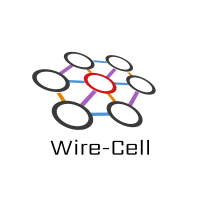Containers and Continuous Integration
Previously posts have discussed Singularity containers which were introduced to provide easy development environments. Recently, Docker container descriptions have been developed to introduce Travis-CI continuous integration to the Wire-Cell Toolkit.
Travis-CI is a popular continuous integration service that can perform builds triggered by commits to GitHub. To do this it must set up an entire OS and build environment from scratch each time it is triggered. One of the best ways to make this reasonably fast is to bundle as much as possible into a Docker container.
For builds to trigger, a GitHub repository must be connected to a
Travis-CI account and a .travis.yml file must be placed in the
repository. This file contains instructions that Travis-CI will
execute.
Currently, the Wire-Cell Toolkit has enabled Travis-CI on two repositories:
If those icons are "green" then the most recent build has succeeded. Otherwise, the source may be broken or something is wrong with the Docker images or with the configuration for Travis-CI. The rest of this post gives some details on this system.
Using the Docker Images
Besides providing the basis for the CI, these Docker images can be used by developers or end users that want to avoid building up a working environment by other means. In the future, Singularity images may be derived from the Docker images which will provide even more ease of use but for now, Docker must be installed in order to make use of them.
To run inside the same environment as used by the CI to test the WCT code:
native$ docker run brettviren/wct-testing docker$ ./run.sh
Note: by default any modifications made while inside the container will be lost once the container is exited.
To run inside the environment used to test the WCT docs:
native$ docker run -it brettviren/wct-documentation docker$ ./anonbuild.sh
Currently, there is no facility to extra build artifacts from the Travis-CI environment. However the container has support for uploading the results of building the documentation to the GitHub repository that is reflected at https://wirecell.github.io/:
$ docker run \ -e COMMIT_USER="$(git config user.name)" \ -e COMMIT_EMAIL="$(git config user.email)" \ -e SSH_KEY="$(cat ~/.ssh/id_rsa_wctghdocs)" \ -it brettviren/wct-documentation ./update.sh
The public SSH key corresponding to the private key that is passed
through the environment above must be added to the WireCell
organization as a "deployment key" for the eventual git push to
succeed.
Building The Docker Images
You can rebuild the Docker images for local use or uploading to Docker Hub.
$ git clone git@github.com:WireCell/wire-cell-containers.git $ cd wire-cell-containers/docker/ $ docker build -t brettviren/wct-deb debian/ $ docker build -t brettviren/wct-testing testing/ $ docker build -t brettviren/wct-documentation documentation/ # optionally push results to docker-hub $ docker push brettviren/wct-deb $ docker push brettviren/wct-testing $ docker push brettviren/wct-documentation
Of course, replace brettviren with your own label, as desired.
To do
Some possible items of future development may include:
-
[ ]derive Singularity images from Docker images. -
[ ]add ROOT towct-testing. -
[ ]create a variant image which includes CVMFS to provide externals needed for testing WCT integrated into LArSoft. -
[ ]find a way to upload build of docs towirecell.github.io -
[ ]include automated building of Doxygen reference docs.
